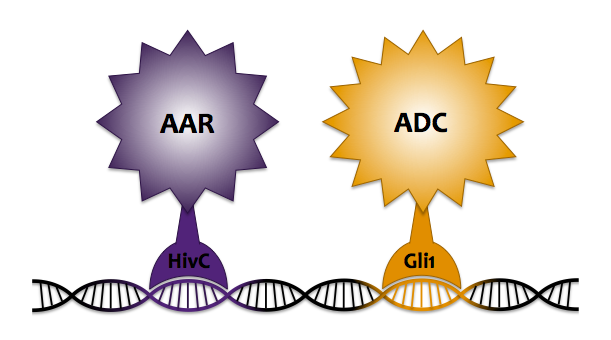Team:Washington/Alkanes/Future/Localization
From 2011.igem.org
Localization
To improve the efficiency of acyl-ACP conversion through the two-step pathway to alkane production, we are performing optimization through localization of the two catalytic proteins. Decrease of the distance the intermediates must travel between Acyl-ACP Reductase (AAR) and Aldehyde Decarbonylase (ADC) is expected to improve overall alkane synthesis.
Initially, we attempted a direct fusion of the two enzymes with a linker. Our main approach is to optimize alkane production by re-use of Biobrick parts from a previous iGEM team. For this, we are re-adapting Biobrick parts from 2010 Slovenia's zinc finger violacein biosysnthesis project. By colocalization of the individual violacein producing enzymes in it's five-step pathway, they were able to increase their pigment production by ~6-fold. Our goal for alkane production optimization is to use the zinc finger localization method to significantly increase yields.
Direct Fusion
Our first approach was direct fusion of two proteins using a glycine-serine linker. We chose to construct both of the linear configurations of AAR to ADC linkage to test the effects of fusion by N and C terminus regions on either enzyme's catalytic performance. This resulted in both the AAR-to-ADC and ADC-to-AAR fusion products.<partinfo>BBa_K590051 DeepComponents</partinfo>
 "
"




